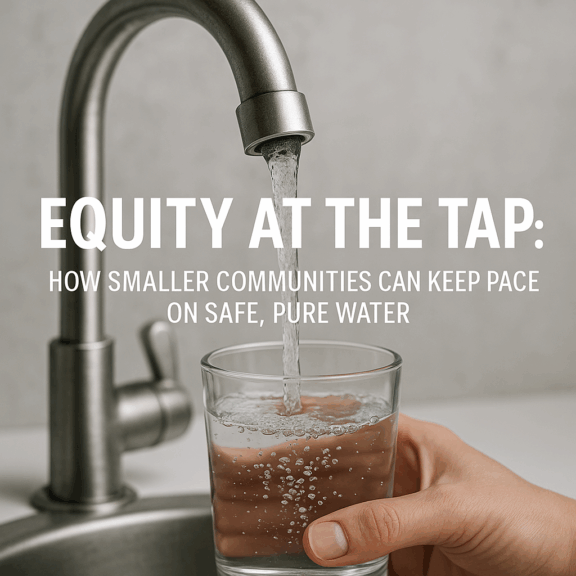Written By: John Sherbondy – Regional Sales Manager, Newterra
Current regulations for monitoring and treating per- and polyfluorinated substances (PFAS) are chaotic and inconsistent. In June 2022, the U.S. EPA set new advisory limits on perfluorooctanoic acid (PFOA) and perfluorooctanesulfonic acid (PFOS), two chemicals in the PFAS family, at 0.004 ppt and 0.02 ppt, respectively. While no treatment limit yet exists at the federal level, the low advisory limit has put many water treatment plants (WTPs) in a bind. Should they start treating PFAS now or wait until it is mandated? If they start now, what maximum contaminant level (MCL) should they target? State and local regulations are currently all over the map, so there is no strong standard to work from.
For some WTPs, it may seem more worthwhile to buy water from a new source than to attempt to treat PFAS. But is that really a more viable option? To answer that, WTPs needs to examine the challenges and benefits of both options, as well as consider how future testing and regulations may affect the decision.
Challenges With Treating PFAS
The biggest challenge that WTPs have with treating PFAS is the cost of treatment. Employing new technologies requires significant capital expenditure (CAPEX). But cost is not the only problem. There is also a perceived cost-benefit shortfall. Many believe that the most common treatment technologies do not sufficiently reduce contamination levels to justify investment… at least until treatment is mandated by state or federal authorities.
The second challenge, as mentioned above, is the uncertainty of final MCLs. Prior to June, EPA set health advisory limits of 70 ppt total PFOA and PFOS but thus far has not established an MCL for either compound. However, some states such as California, Massachusetts, Michigan, New York, and New Jersey have set limits for specific PFAS chemicals. WTPs could spend years designing and investing in treatment systems to hit those targets, only for new, lower limits to be announced that could render the system obsolete before it goes online. Unfortunately, however, doing nothing is just not a viable decision. WTPs that know they have PFAS in the water have an obligation to make an effort to reduce public exposure to the chemical.
Alternative Water Sources
Given the uncertainty around PFAS treatment levels, many WTPs are opting to buy water from new sources, rather than treat existing water known to contain levels PFAS. This is far from an easy solution and there are two major pitfalls to it.
The first is infrastructure. Whether the water is a brand-new, untreated source or treated water from another entity, there must be a pipeline infrastructure in place to bring it either to the plant or into the current distribution system. This, too, may require significant CAPEX. There’s no guarantee that such an investment will be cheaper in the long run than treating the existing water.
In addition, new water sources often have different water chemistry. When water chemistry changes, it can impact the effectiveness of the treatment process and possibly incur new CAPEX to handle other contaminants that, while less challenging than PFAS, still cost money in the long run.
The most famous example of new water chemistry gone wrong is Flint, MI. The city changed its water source from the Detroit River to the Flint River, the former of which was corrosion controlled with orthophosphates, but not the latter. The result was extreme levels of lead leeching and subsequent health risks. This may be an extreme example, but it still serves to show what can happen when water chemistry isn’t sufficiently accounted for in new water sources.
How To Treat PFAS
The three most commonly used technologies for removing PFAS from water are granular activated carbon (GAC), ion exchange (IX), and membrane systems such as reverse osmosis (RO). For municipal water treatment, RO systems often involve much higher capital costs.
That leaves many WTPs choosing between GAC or IX systems for treating PFAS. The question of which system works best will depend on the chemistry of the water source, among other factors. For example, GAC is ideal for water sources that have high levels of total organic carbon (TOC) and total dissolved solids (TDS), as the media may be effective at removing TOC without interference from TDS.
GAC vessels usually have a maximum flow rate of 10 gallons per minute per ft2 (gpm/ft2) with an empty bed contact time (EBCT) of 10 to 15 minutes. By comparison, IX systems have flow rates of up to 12 gpm/ft2 with EBCT of 2.5 to 7.5 minutes. This means that they are ideal for WTPs that need to conserve real estate in the plant. However, many contaminants, including sulfates, nitrates, and TOC, can interfere with capacity or foul the media and may need to be removed ahead of the IX system.



